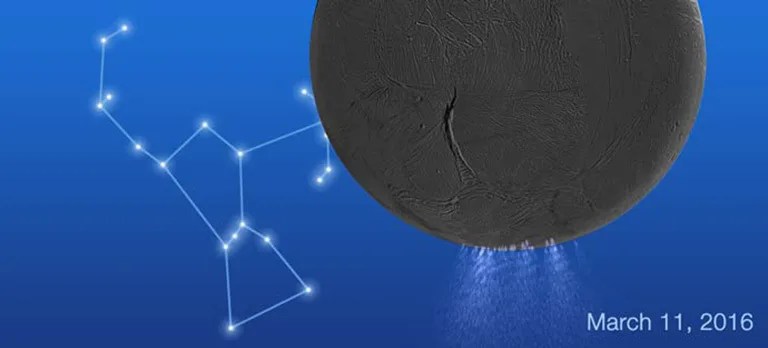2 min read

On March 11, 2016, Cassini's Ultraviolet Imaging Spectrograph (UVIS) will watch as the plume of gas and icy particles from the moon Enceladus passes in front of the central star in Orion's Belt. Such observations, known as stellar occultations, provide information about the density and composition of the plume. Enceladus will pass in front of Epsilon Orionis, and UVIS will watch as the light from the star is altered as it passes through the plume. Enceladus will be 536,000 miles (923,000 kilometers) from Cassini at the time; the star is about 2,000 light years away.
This occultation will help fill in a key part of scientists' understanding about the gas part of plume and how it varies with time. If scientists see a similar increase in the water vapor abundance as they have seen in the particle abundance, it will suggest that the water vapor and entrained particles behave in the same way. This, in turn, will provide insight into the nature of the still poorly understood eruption mechanism behind the plume.
View and download unedited Stellar Occulation Video
Distance from Enceladus
536,000 miles (923,000 kilometers)
Distance from Orion
2,000 light years
- Enceladus will be at apoapsis (the farthest point from Saturn in its orbit).
- This observation of the gas in the plume will complement previous particle measurements.
- Previous plume gas measurements all show a similar rate of emission, while particle measurements show a threefold enhancement near apoapsis.







